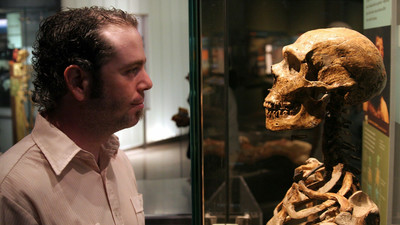It turns out that the development of Neanderthal's brain traces a different path from modern people

ByOpacity
Max Planck Institute of Evolutionary AnthropologyThe research team announced the research results that the process of development is different between Neanderthal and the modern human brain.
About the Neanderthal man once thought as an ancestor of mankind, it was obtained from the remainsMitochondrial DNAIt was almost obvious that it is a different line of human beings by analysis of. However, as a result of recent genomic research, it was found that the gene was handed down to modern people, and he was calling further mystery. This research seems to hit the problem from another angle to this problem.
Details of the research results on the relationship between Neanderthal people and modern people are as follows.Neanderthal's Brain Development Created a Divergent Evolutionary Path
When comparing Neanderthal people who existed about 28,000 years ago with the brains of newborn human beings today, the sizes are nearly the same, looks almost the same at first glance. However, it is in GermanyMax Planck Institute of Evolutionary AnthropologyAccording to Phillipp Gunz who works for the company, there are particularly notable differences in the development of that one year old.
Mr. Gunz said, "Between the year and a half and two years after birth, there is a big difference in the way of development between the Neanderthal people and the modern human brain," he says, "This new discovery is the most human- It is a way to honor how the thoughts of nearby ancestors differ from the current human beings, and it will be a catalyst for clarifying the details of the evolution of human brain. "
Comparison of the brain was done by scanning and combining fragments of Neanderthal skulls and using neonatal models of several patterns of different developmental stages to create virtual neanderthal brains on the computer. In the first year of the brain of modern humans, the neural circuits are starting to act more actively, which means that Homo sapiens may have helped survive natural selection. Also, the brains of adult Neanderthal people are small elongated shapes unlike modern people, and this feature seems to be seen also in chimpanzees.
Mr. Gunz said, "Interestingly, modern humanity has little relation to the size of the brain with the degree of intellectual ability, the important thing is the internal structure of the brain," said Neanderthal Was thought to be intellectual by having a huge brain.However, as the internal structure of the brain is different from modern people, they said that they perceived the world just like us I can not think of it. "
An image of Neanderthal's brain composed of skull data.

It seems that scholars who think that the Neanderthals are the closest ancestors to modern people and think that it is the same species as modern people. Research on mitochondrial DNA obtained from the remains shows that it is a different species from modern human beings, but as a result of genome analysis in recent years, about 1 to 4% of the genome of modern people is Neanderthal I know that people are coming from, and I am calling for more ripples.
In particular, mutants discovered as a result of analysis of genes of contemporary humans around the world"Haplogroup D"It is thought that modern people are genes inherited from the Neanderthal people. "Haplogroup D" is thought to be present in about 70% of modern people, appears in Homo sapiens about 37,000 years ago, and it is thought that it rapidly spread as human genes by natural selection .
"Haplogroup D" is different from other mutants and the research team believes that this mutant was present at least about a million years ago, and this is due to the emergence of modern human beings Homo sapiens It will be before. The research team believes that prehistoric Homo sapiens mated with a species having "haplogroup D" and speculate that the mating species is Neanderthal.
The Neanderthals are distributed in the current European region preceding Homo sapiens, and this "haplogroup D" is thought to have helped Homo sapiens adapt to the environment of Europe and it spread rapidly. "This research is the most attractive case of how Neanderthal's genes contribute to modern people," said Svante Paabo of the Max Planck Institute for Evolutionary Anthropology.
Related Posts:
in Science, Posted by darkhorse_log







